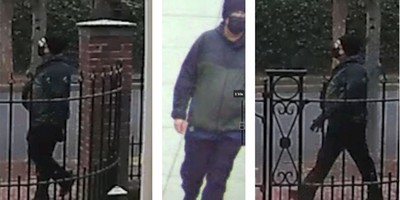Mentally ill convicts go untreated until they "suffer from severe hallucinations" and fall "into catatonic states." Suicidal inmates are "held for prolonged periods in telephone-booth sized cages without toilets." Some prisoners die for lack of medical care, and others kill themselves.
Actually, those quotes are not from Solzhenitsyn. They're from the U.S. Supreme Court decision last week on California's grossly overcrowded penal system. A majority of the justices decided that when a state approaches Stalinist standards of barbarity, something has to be done.
The state admitted years ago that its treatment of inmates violated the Constitution's ban on "cruel and unusual punishments." After years in which the problem went unrepaired, the court ran out of patience. It ordered California to reduce its prison population, which now stands at around 145,000, by anywhere from 33,000 to 46,000 inmates.
You may assume mobs of cutthroats will soon be let out to rape and pillage. Dissenting Justice Samuel Alito predicted "a grim roster of victims." Kent Scheidegger of the Criminal Justice Legal Foundation in Sacramento urged Californians: "Buy a gun. Get a dog."
But before locals go mad with panic, they might consider some reassuring facts. One is that California doesn't have to liberate any inmates. It can keep them all confined, as long as it's willing to provide the space and services to meet minimum requirements of humane treatment.
As the Supreme Court helpfully noted, the state can open more prisons, place convicts in county jails or ship them to states with vacant cells. Those options cost money, but there's nothing to stop nervous voters from demanding higher taxes to pay for them.
Recommended
As it happens, many of those serving time in California never had "victims." Nearly 25,000 of them are in prison for nonviolent drug offenses -- mostly simple possession or possession for sale.
If these people were out, they wouldn't be particularly scary. Though you may not like the occasional whiff of burning cannabis, guns and dogs won't do much to improve the aroma.
Many of the other prisoners may imperil your property but not your person. They are in for things like shoplifting, forgery and receiving stolen property. Those are crimes that ought to be punished and prevented, but not crimes that cause most of us night terrors.
It has escaped the notice of Alito that the state can protect the public from such felons without holding them in prison -- using electronic monitoring, drug testing and strict supervision to keep them on the straight and narrow.
"I don't think there's any doubt that we can let out more than 30,000 prisoners and have crime go down, if we spend some of the money we save by not housing them on watching them better in the community," UCLA criminologist Mark Kleiman said in a radio interview.
GPS surveillance of a felon costs about $4 a day, he points out -- a massive bargain next to the $100 a day needed to house and feed him in prison. If the function of penitentiaries is to keep bad people from preying on good people, it often can be achieved just as well with newfangled technology as with steel bars and razor wire.
Many legislators have already stumbled on a way to spend less and be more secure: lock up fewer people. States from New York to Texas have decided that mass imprisonment is a luxury they have to curtail. Marc Mauer, head of The Sentencing Project, reports that in the states that have cut back on incarceration, "no adverse impacts on public safety were observed."
In the long run, locking up so many criminals is a false comfort. It may be no coincidence that California has an unusually high rate of recidivism. The former warden of San Quentin State Prison testified that existing prison conditions "make people worse." Most of those people wind up back among us, more dangerous than before.
Cramming ever-growing numbers of offenders into horribly overburdened facilities is an inexcusable way to treat the guilty. And guess what: It's no favor to the innocent.
























Join the conversation as a VIP Member